Y
Yogi Ashish
Guest
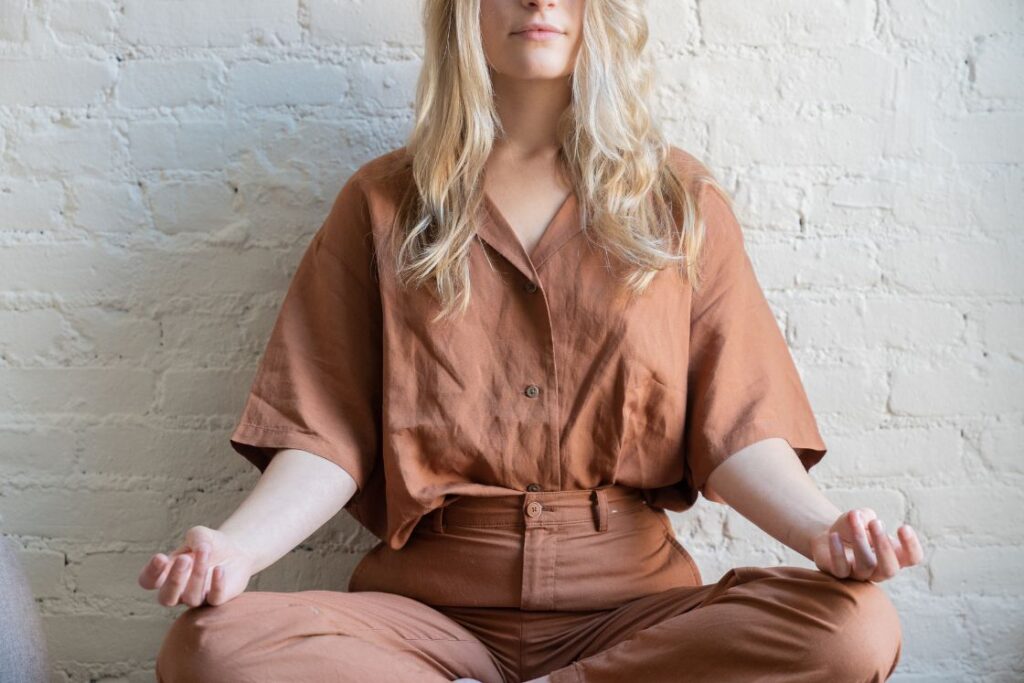
Vata dosha is the Ayurvedic energy linked with air and space, and when imbalanced it creates qualities like coldness, restlessness, irregular routines, anxiety, and disturbed sleep. People with a dominant Vata body type often experience hyperactivity, mood swings, and stress when this energy goes out of balance.
Yoga is one of the most effective ways to calm and balance Vata dosha. Gentle movements, grounding postures, warming pranayama (breathing practices), and steady meditation help bring stability to the mind and body.
In this guide, you will learn 7 grounding yoga poses, calming pranayama techniques, and meditation practices specifically designed to balance Vata dosha.
Which yoga is best for vata dosha?
For balancing Vata dosha, yoga practices should focus on grounding, warming, and calming movements. This includes standing postures, gentle twists, slow transitions, and long-held poses to build heat and stability in the body.
The following yoga styles are particularly beneficial for Vata:
- Hatha Yoga – Focuses on alignment and slow, steady poses.
- Yin Yoga – Uses long holds to release tension and calm the nervous system.
- Restorative Yoga – Supports deep relaxation and stress relief through supported postures.
These practices help promote relaxation, balance energy, and reduce Vata-related anxiety and restlessness.
Grounding yoga poses for vata dosha
By incorporating grounded and rooted aspects into asana practice slowing down, providing a quality of solidity and firmness—you can bring balance to the light, airy, and mobile qualities of vata dosha.
Lowering Vata can be accomplished with gentle yoga that offers firmness or restorative.
Each yoga pose should be performed repeatedly by a vata person, but only for a brief period of time. Practice should be done gradually and cautiously. Keep a close eye on the movements between postures as well, completing them mindfully rather than hurriedly moving on to the following pose.
Pose variations that compress the pelvis, such as all forward bends, are therapeutic for Vata because it is prone to constipation (standing or sitting). Pay attention to postures that stretch your thighs and lower back.
Vata, which is vulnerable to anxiety, overexertion, and exhaustion, can be aggravated by quick-paced vinyasas or flow sequences. Pace thoughtfully and slowly, prolonging the time you hold each position, to make a vinyasa more vata-calming.
Here are some beginner-friendly yoga poses you can incorporate into your Vata-balancing routine.
Join Our 5-Day Ayurveda Body Type Workshop
1. Tree Pose (Vrkasana)
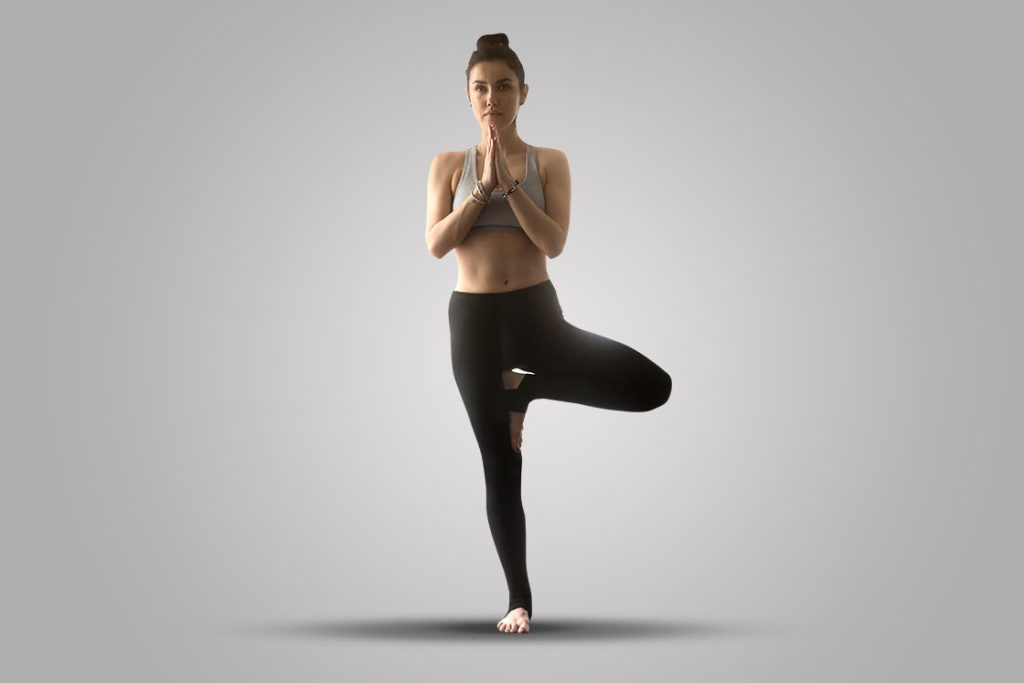
This standing pose is excellent for grounding and balancing your prana vayu, a type of Vata dosha. The balancing part of the pose also manifests in your life by bringing stability, patience, and resilience. It helps to improve mental focus, reduce anxiety and stress and connect to the Earth element. You are also able to generate internal heat as you balance on one leg by engaging your core and leg muscles.
Steps to perform
- Standing upright in Tadasana (Mountain Pose). Establish a firm and wide base by spreading the toes wide. Make sure your body weight is spread equally on all four corners of the feet.
- Shift some weight on your right leg and slowly start lifting the left leg. keep your right leg relaxed and do not lock the knee.
- Turn your left foot inwards and place the sole on the inside of the right thigh. Press the sole of the left foot and right thigh towards each other to create balance.
- If you cannot bring your feet to the thigh, you can keep your foot below the knees.
- Keeping your gaze in the front, on a focal point, to aid with balance.
- Place your hands in the Anjali Mudra in front of your chest or stretch your arms above your head.
- Hold this pose for 3 breaths and repeat with the other leg.
2. Downward Facing Dog Pose (Adho Mukha Svanasana)
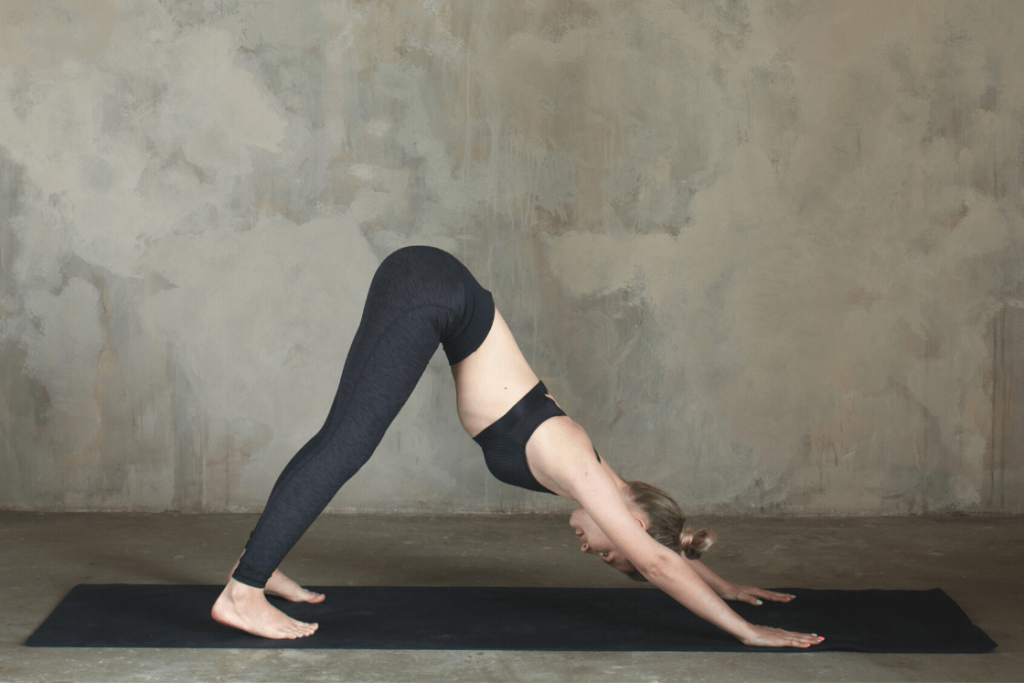
Image: Canva
This pose helps balance the various types of vata vayus. It aids in enhancing the circulation to all the body parts, encouraging a calm mind, improving the metabolism and function of the digestive system, aiding in the secretion of feces and urine, and promoting a calm mind with mental clarity.
Steps to perform
- Come to a tabletop position.
- Your arms should be parallel to each other and placed shoulder-width apart and your legs hip-width apart as well.
- Spread your finger to distribute the weight evenly on your hands.
- Press your hands and feet firmly onto the ground and lift your knees. Keep lifting your knees till your legs are straight and the buttocks are pointing upwards.
- Extend your tailbone towards the ceiling to keep your back straight and further lift from the hips.
- Your body should form an inverted V shape with weight spread evenly in your arms and legs.
- Let your head and neck hang freely and keep a fixed point as your focal point for a steady gaze.
- Hold the pose for 3-5 breaths.
3. Warrior Pose II (Virabhadrasana II)
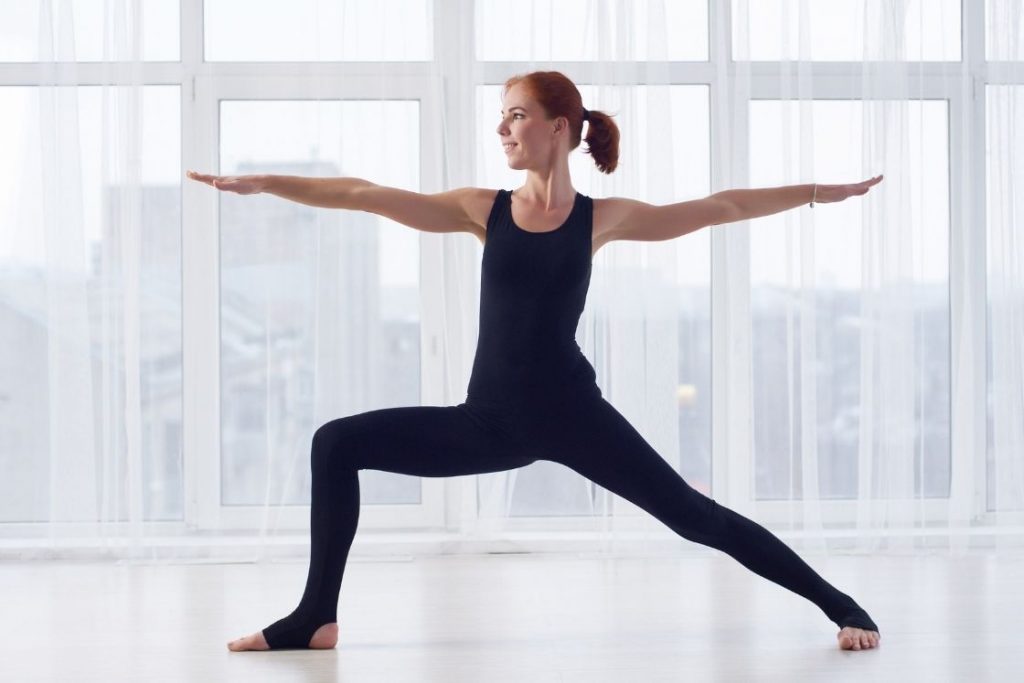
Image Source: canva
Warrior Pose II is another grounding pose that also helps you build mental and physical strength. This pose will also help in providing some stability and focus, both towards your pose as well as your life.
Moreover, engaging your core muscles to maintain the pose also helps strengthen the digestive system.
Steps to perform
- Begin with the Mountain pose (Tadasana) as you stand facing the longer end of the mat.
- Spread your legs apart approx. 3-4 feet. Extend your arms sideways and bring them parallel to the ground, with palms down.
- Make sure your shoulders are not hunched and are away from your ears.
- Turn your head to the right and fix your gaze on your right-hand fingers.
- Bend your right knee at 90 degrees while keeping the feet facing forward, stacking your knee over the ankle. Your right thigh should now be parallel to the ground along with your arms.
- Stretch your left leg to the back and turn your feet at a 45-degree angle.
- Hold this pose for 3-5 breaths and repeat the pose with the other leg.
4. Standing Forward Bend (Uttanasana)
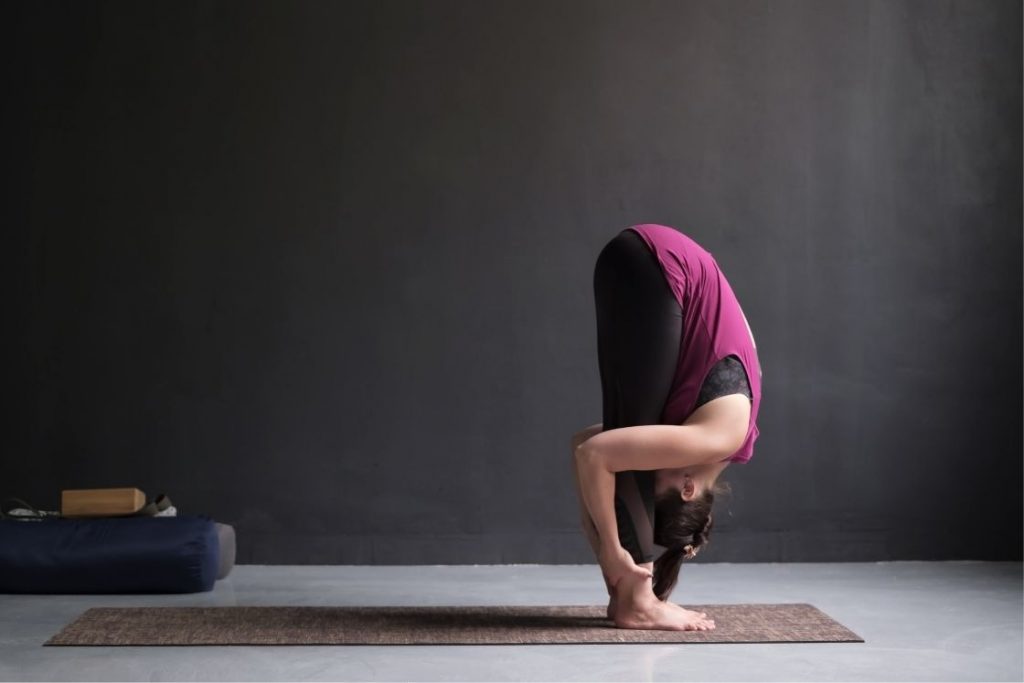
Image Source: canva
Uttanasana will help in increasing the heat in the internal organs, especially abdominal organs as the abdomen gets compressed in this forward bend. Building internal heat will remove the coldness that a vata might feel regularly.
Moreover, your spine also gets stretched to a significant extent and it promotes circulation towards the head. This will greatly benefit in reducing the anxiety, fear, and insecurity a vata feels occasionally.
It is also a good grounding pose as you need to stay firmly grounded as you bend your upper body forward.
Steps to perform
- Stand in Tadasana (Mountain Pose) with your legs slightly apart and firmly placed on the mat. Keep your hands at the bottom of your buttocks.
- If you feel comfortable, you could also keep your legs closed.
- Start bending forward from your hips while keeping a straight spine.
- As you bend, slide your arms down the back of the thighs till they reach the ankles.
- Your bending will mostly depend on the flexibility of your hip, so do not force yourself to bend fully.
- You can also rest them on a stack of yoga blocks or books which should be placed on the outside of your feet.
- Let your head hang freely.
- Stay in this pose for at least 3-5 breaths.
5. Reclined Hero Pose (Supta Virasana)
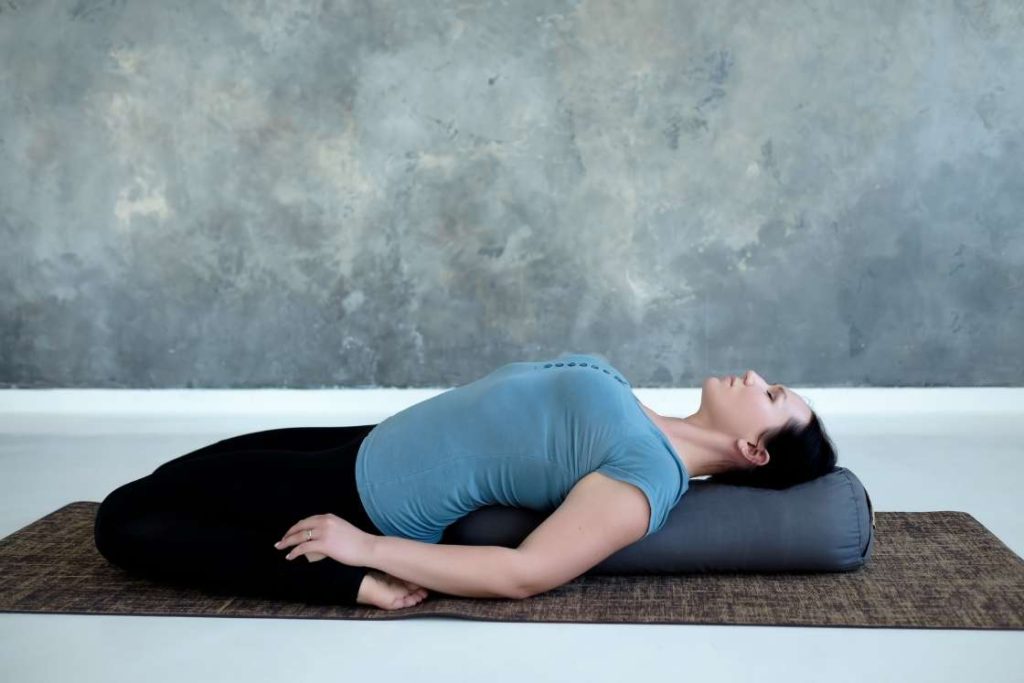
Image: Canva
Supta virasana will help balance the samana, udana and vyana vayu. This will help with proper digestion and relief from many digestive disorders with proper...
Please login to view full content. Log in or register now.
